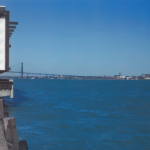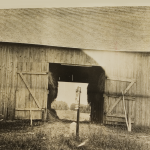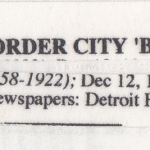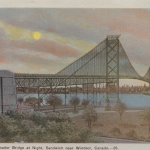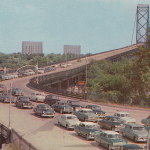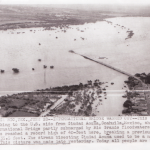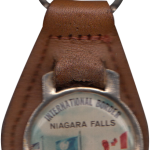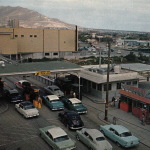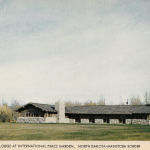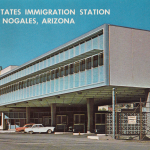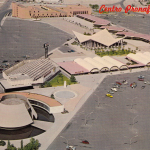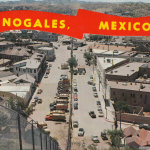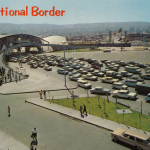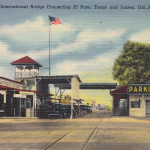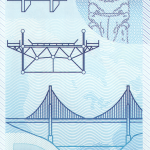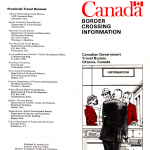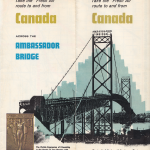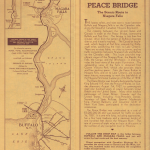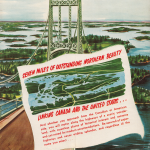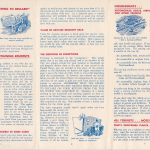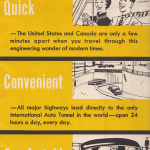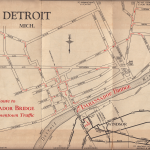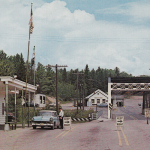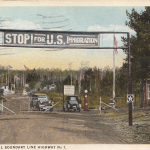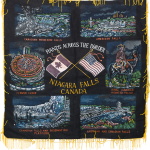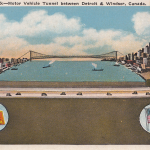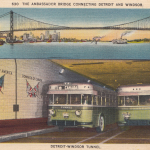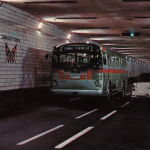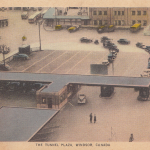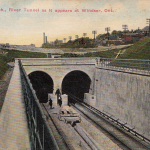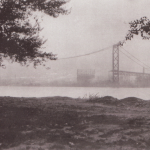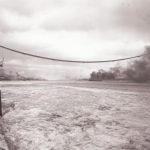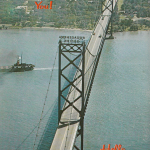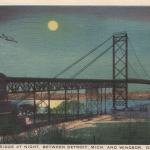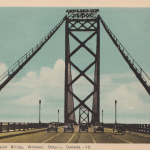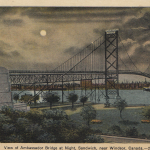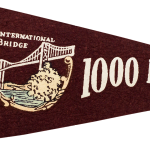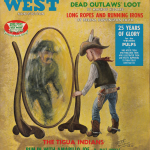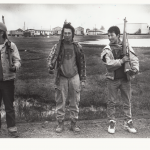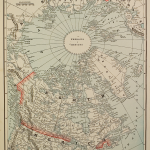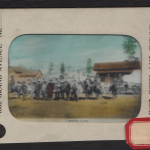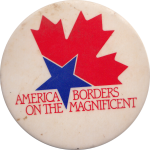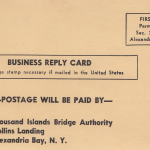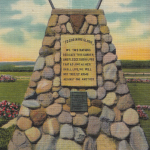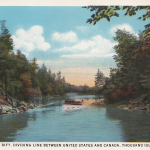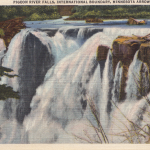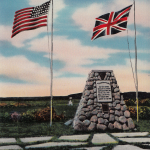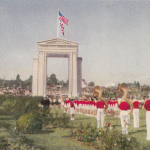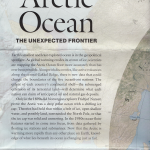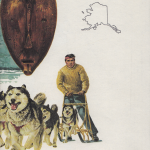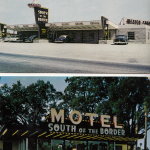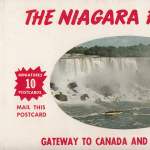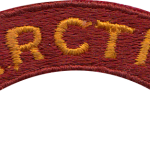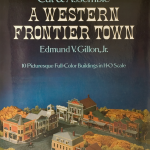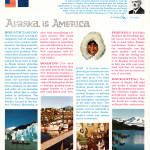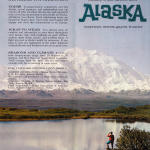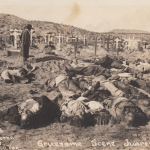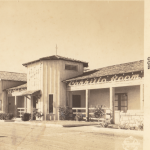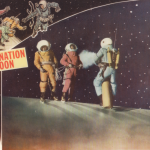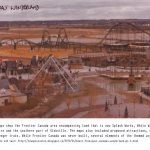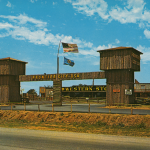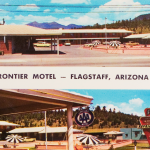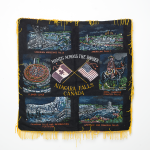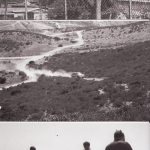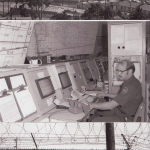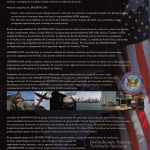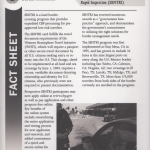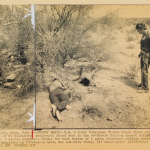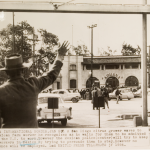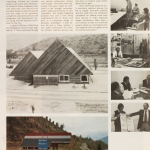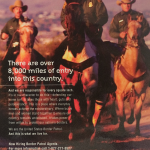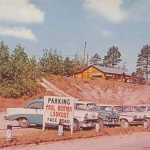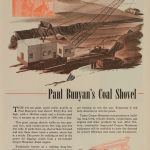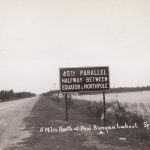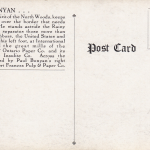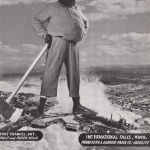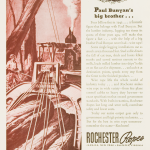Border Artifacts
Border Artifacts
Entries and Exits
Entries & Exits brings together documents that reference shifting attitudes toward borders in North America: official and unofficial crossings, as well as the styles of border architecture and infrastructure that reflect changing political, economic and cultural attitudes throughout the 20th century. Bridges connecting Mexico with the U.S. and the U.S. with Canada were regarded as significant tourist attractions, stopping places rather than the stressful thoroughfares that we now experience. This section also traces borders in North America as sites of loss and disconnection.
Frontier Fantasy
As of 1890 the United States Census Bureau considered the geographical region of the frontier “closed.” However, its power has persisted as a significant and defining motif throughout the 20th century: it can be seen in the tourist industry as well as in the literary and filmic genres of Westerns and Science Fiction. As the ongoing site for ‘orientalizing’ impulses, epic battles between good and evil as well as the mythic location of industrial ingenuity, the frontier continued to remain a viable myth throughout most of the twentieth century. While it is difficult to suggest exactly what has become of the frontier in a 21st-century, globalized context, its powerful legacy has worked to make territorial claims for Americans in ways that surveys and treaties alone fail to secure. In looking at representations of the frontier over the course of the 20th century, there is a notable shift from the tourist construction of the ‘last frontier’ in the 1940s and 50s to ideas of the ‘new frontier’ in the latter half of the century. The new frontier was synonymous with the territorialization of the North as well as the exploration of space during the Cold War.
Patrol as Performance
National borders are relatively recent human constructions. While military walls have long fortified historic empires, the sharp linearity of boundaries was naturalized with the birth of the nation state in the 18th century. At the end of the 20th century, ideas of a borderless world were promoted after the fall of the Berlin Wall in 1989. However, since 1990 it has been reported that over 26 000 kilometres of security fence and wall have been constructed between countries around the world. These walls have done little to stop the flow of migrants or serve as a detriment to terrorist activity, thus they have become more theatrical than military, despite their great cost (Brown, 2011). Recent thinking on borders has emphasized the performative and linguistic aspects of their construction, suggesting that borders are processes that must continually be enacted to maintain their effects.
- These commonly used water jugs are often found in the desert between Mexico and the US and are used by migrants making the trek north into the US. Black plastic is the preferred material for carrying water as it does not reflect sunlight and therefore cannot be as easily detected by surveillance drones. This jug and the shoe cover were sold on ebay. The seller is not known.
Paul Bunyan
Frontier imagery is also promoted in the story of Paul Bunyan whose transformation from French Canadian habitant to the patron-saint of transnational industry can be traced in the first pages of James Stevens 1929 novel as well as in advertisements for machinery and automobiles.
- Paul Bunyan has been imagined as a patron saint of the lumber industry (a trend that was particularly strong in the 1930s, 40s and 1950s) and here is pictured on the border between northern Ontario and Minnesota. Many northern states have claimed the mythological Bunyan as their own, although according to the James Stevens 1926 version of the story, Paul Bunyan was born in Quebec as the Quebecuois Paul Boyan and became an American upon his journey south to northern Maine.


